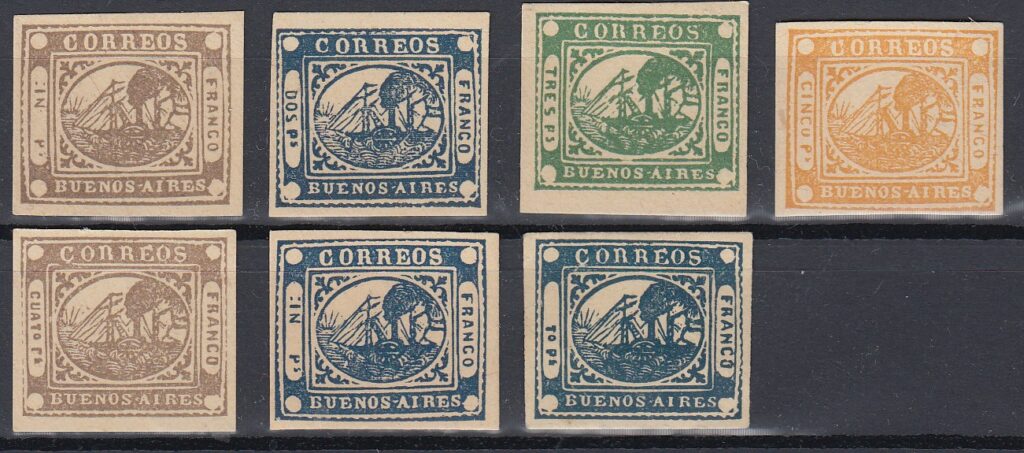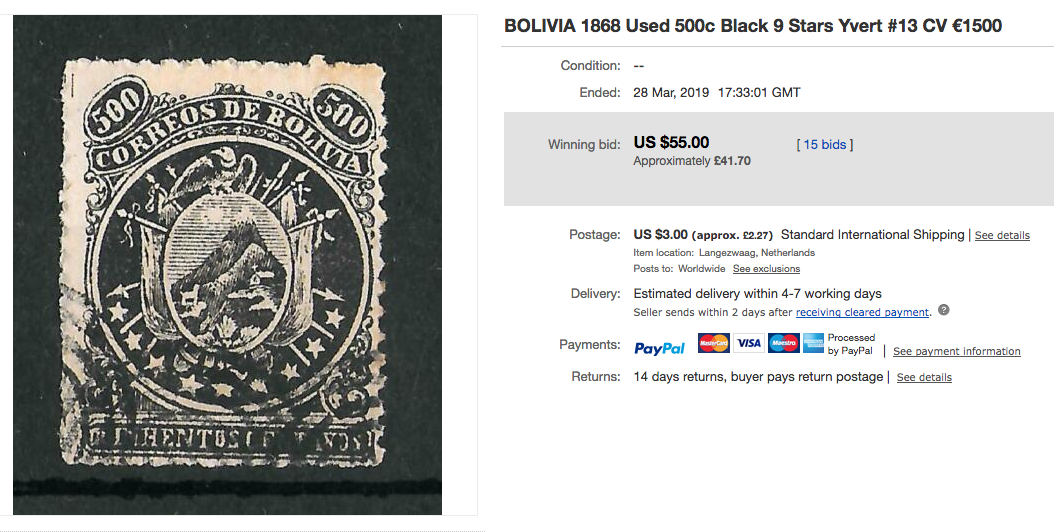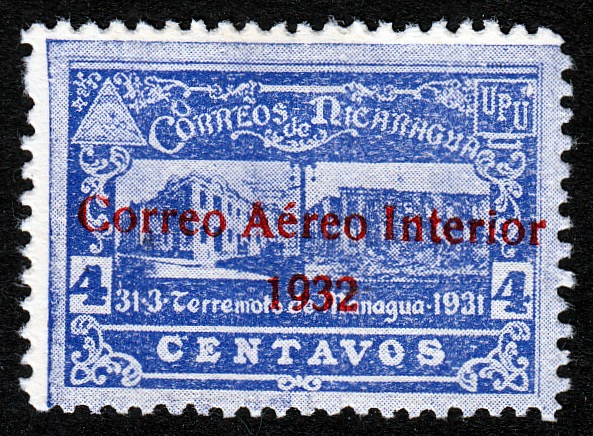
In the earlier years of philately, faking and forging was big business. In many ways, it still is, with money to be made by unscrupulous types offering dodgy imitations of current issues on eBay at knockdown prices.
But in the first one-hundred years of philately, much of this activity was targeted primarily at philatelists who needed to fill a space in their album and were either unable to find or afford a genuine copy.
Demand creates supply and it wasn’t long before the market was awash with the output of forgers such as Fournier, Spiro, de Thuin (particularly in Latin America), Sperati and many others.

Their legacy remains to this day…and much of it can still be found online, littering the listings of eBay, Hipstamp and Delcampe.
Don’t get me wrong; all three of these sites are wonderful resources and have completely changed the nature of philately and how collectors buy and obtain new items. I use them to buy and sell like most CLA readers and the philatelic world would be a lot poorer without them.
The changing dynamics of buying and selling
But the whole dynamic of selling has changed dramatically. Never has caveat emptor been more appropriate than it is today.
It wasn’t that long ago that to fill a space in an album, you needed to have a relationship with a handful of trusted dealers. These were full time professionals whose livelihoods depended on the integrity of their advice, their stock and the stamps they sold you.
Reputation was king and if they pulled a fast one then they didn’t stay trusted for very much longer.
But it also meant choice was limited. You could wait forever trying to fill that gap and frustrated collectors would often take a short cut by accepting spacefillers or forgeries until something better came along.
Fast-forward to today and that (slightly smaller) band of trusted dealers are still very much in existence. Except this time, their efforts are supplemented by thousands of online sellers.
Some are collectors simply looking to offload duplicate stock whereas many are speculative generalists, looking to turn a buck on breaking down collections or accepting albums ‘on consignment’ and supplementing income through part time ‘dealing’.
All of which is perfectly fine, as long as you have your wits about you and proceed with caution.

The three types of online seller
There are no hard and fast, black and white rules but I approach listings from sellers I do not know by informally placing them into the following broad categories:
a) single items from specialists (focused on a country, region, era, theme, type etc). Whether listed by a traditional dealer or enthusiast, these will often have a very good chance of being accurately described and qualified as genuine.
b) single items from generalists. I approach these with caution. That’s not to say that the item isn’t likely to be genuine but you need to question whether the seller has sufficient knowledge of their subject matter and has done the research to confirm the integrity of the item.
The earlier the stamp, the more due diligence is usually necessary. Buying at 10% of catalogue is all very well until you find out that what you have purchased is not all that it was cracked up to be.
c) albums, collections and accumulations. Unless the collection is specialised, the odds are you are going to get a few fakes and forgeries within the mix. Even full time dealers are not usually going to have the bandwidth to go through a general collection item by item to fully warrant the genuineness of each stamp.
Most general collections (the ‘one of each’ variety) are likely to contain a few dubious offerings. Bear in mind that this in no way should reflect negatively on the seller. Buying a collection over the internet is always going to be something of a lottery and where you lose out on the odd forgery, you may well gain on an overlooked perf or watermark variety.
A typical eBay forgery
A quick search through some of the Latin American items available on eBay this week, brought up this somewhat dubious offering. It’s a typical example of the type of listing one can find every day.

Ten bidders placed fifteen bids to acquire this stamp. Without any reference books to hand, alarm bells should have been ringing. For example:
a) it just looks plain crude. Look at the perfs for starters…
b) this issue was engraved. It lacks the detail that an engraved stamp of this era would typically show
c) this issue was printed by the American Bank Note Company, one of the world’s most eminent printers. This wouldn’t get past the gate
d) you don’t need another 500c to compare it to. Just take a cheapie from the same set, place alongside and spot the difference
e) it’s a stamp from the nineteenth century with a four figure value. Straight away that should signal ‘fake alert’!
So that’s five easy pointers without referring to any guides or reference works (other than a stamp catalogue). But hey, maybe the lucky winner collects forgeries..?

Unfortunately there are a few bad apples out there that are purposefully trying to hoodwink the unwary. Caution is particularly needed with certain ‘proofs’ which may have been knocked out by someone with a sophisticated printer and the intent to deceive.
Ultimately, unless you are buying from a reputable source, the responsibility lies with you, the buyer, to build your personal knowledge bank and ensure that you’re getting the real deal.
For more information on identifying fakes and forgeries, take a look at the Resources section.

The Bolivian fake was made by Spiro. The complete series was falsified. For example the 50 cents blue value reads “Cincoenta” instead of “Cincuenta” and the 500 cents black stamp depicted here reads “Quinhentos”instead of the correct word “Quinientos”
How can you tell the counterfeits of Columbia 436
The 10 peso of the
1935 set
Selstamp@telus.net
As always, the best approach is to compare with a genuine example (there are a number of good images on the web). Key elements to look out for are:
Perforations should be 11.5
Colour should be deep black on white paper
The image should be sharp
Background lines behind the condor are thin and evenly distributed
The middle bar of E in PESOS points downwards slightly in genuine examples
The letters LIT below the image should be all be level with one another